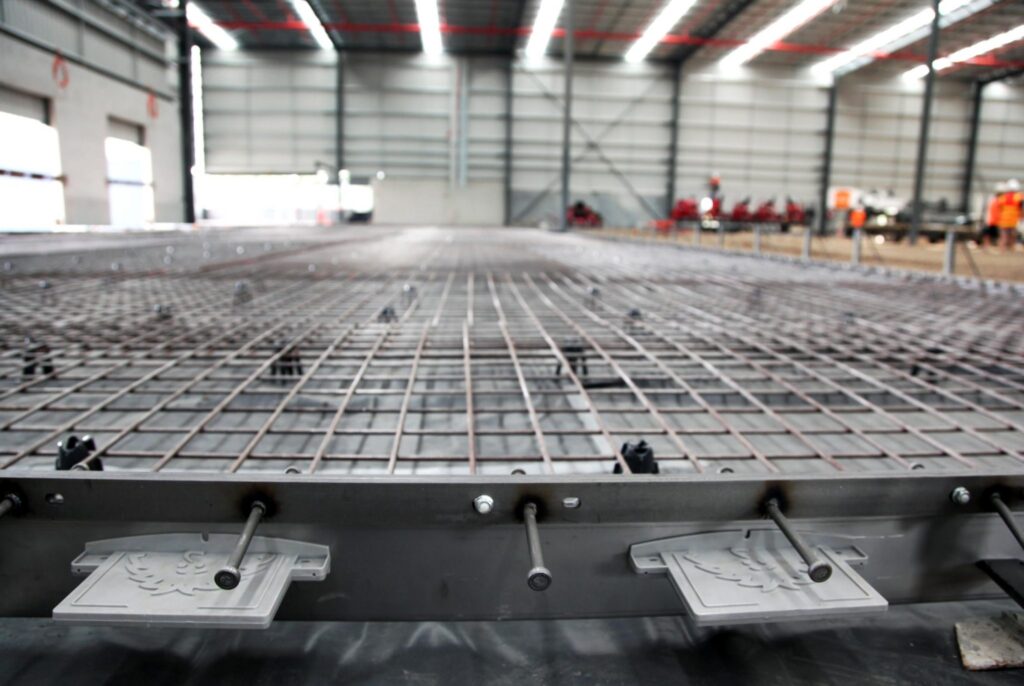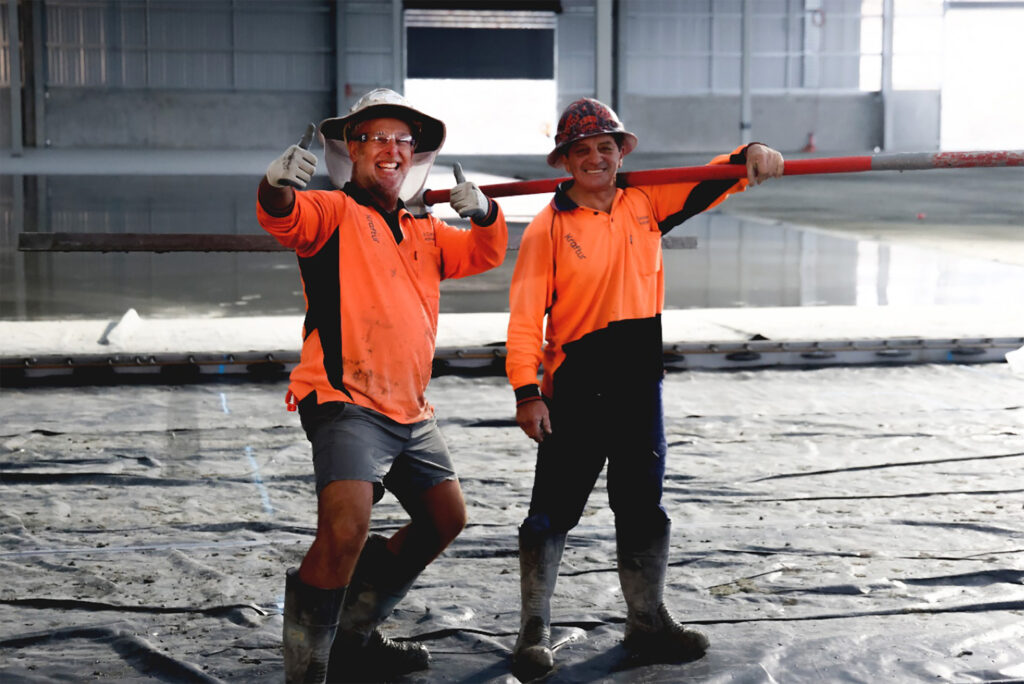As our industry pivots towards sustainable solutions, there’s a looming question:
Is fibre-reinforced concrete (FRC) ready to shoulder the weight of our expectations?
Breaking Ground: Overcoming Concrete Concerns
The shift towards FRC has gained momentum. Yet, amidst the allure of enhanced durability and reduced environmental impact, lies some reservation from developers and designers when it comes to FRC slabs. From cost concerns to structural challenges, slab failures, and desired outcomes have not been met, there has been anxiety about transitioning away from trusted conventional methods.
Put simply, the risk of things going wrong is higher than conventional slabs. But with greater risk comes greater reward.
9 Benefits You’re Missing Out On If You’re Not Using FRC Slabs

01 Improved Durability
FRC slabs offer superior durability compared to conventional concrete, due to the reinforcement provided by fibers. Fibers dispersed throughout the concrete improve resistance against cracking and improve impact resistance, enhancing overall longevity, and ensuring structures maintain their integrity over time.
02 Improved Crack Control
The inclusion of fibers in FRC helps control cracking by distributing microcracks more evenly throughout the concrete matrix, minimising the propagation of cracks, and mitigating the risk of structural failure and water ingress. By minimising crack formation and propagation, FRC ensures enhanced structural integrity and long-term performance, even in challenging environments.
03 Reduced Concrete Shrinkage
By mitigating shrinkage cracking, FRC minimises the risk of surface defects and structural vulnerabilities associated with traditional concrete. The inclusion of fibers helps restrain shrinkage-induced stresses, ensuring uniform drying and reducing the likelihood of crack formation, particularly in large slabs or structural elements.
04 Increased Strength
The incorporation of fibers in FRC enhances its strength, specifically its flexural strength, compared to conventional concrete, allowing it to better withstand bending and deformation under load, making it more suitable for industrial floors and pavements, where greater resistance to bending and shear forces is required. This increased strength not only improves structural performance but also extends the lifespan of the concrete elements.
05 Environmental Sustainability
Utilising FRC reduces the carbon footprint of construction projects by incorporating recycled materials and minimising the need for supplementary cementitious materials, contributing to sustainable building practices, aligning with green building initiatives and reducing environmental impact.
06 Enhanced Fire Resistance
FRC demonstrates superior fire resistance compared to conventional concrete, as the fibers act as reinforcement even at elevated temperatures. This inherent fire resistance minimises structural damage and helps contain fires, contributing to the safety and longevity of buildings and infrastructure.
07 Faster Construction
FRC allows for faster construction compared to conventional slabs due to its improved workability and reduced need for additional reinforcement, resulting in shorter construction schedules and increased productivity.
08 Reduced Maintenance
FRC slabs typically require less maintenance compared to conventional slabs due to their enhanced durability, strength, better crack control and reduced concrete shrinkage. Through more stable structures and greater resistance to forms of deterioration, FRC slabs require less maintenance over time and therefore a longer service life.
09 Cost Savings
While initial costs may be slightly higher than conventional concrete, the long-term benefits of FRC, including reduced maintenance, extended service life, and enhanced performance, often outweigh the upfront investment. By minimising repair and replacement expenses and improving overall structural efficiency, FRC delivers significant cost savings over the life cycle of a project.

To FRC or not to FRC?
The choice between conventionally reinforced concrete and FRC depends on various factors, including the specific requirements of the project, budget considerations, and local building codes. Developers may opt for FRC to address specific performance criteria and to achieve a more resilient and cost-effective solution for their industrial buildings, or to align with criteria required to achieve a higher Green Star rating.
Making the decision to move to FRC shouldn’t be made lightly. It takes experience to get FRC slabs correct.
Kraftur completed our first FRC pour 14 years ago on a Frasers Property project. We are now completing over 250,000m2 per year, as the market adopts this transition. Thinking about making the shift to fibre? Talk to those experienced in delivering FRC.


